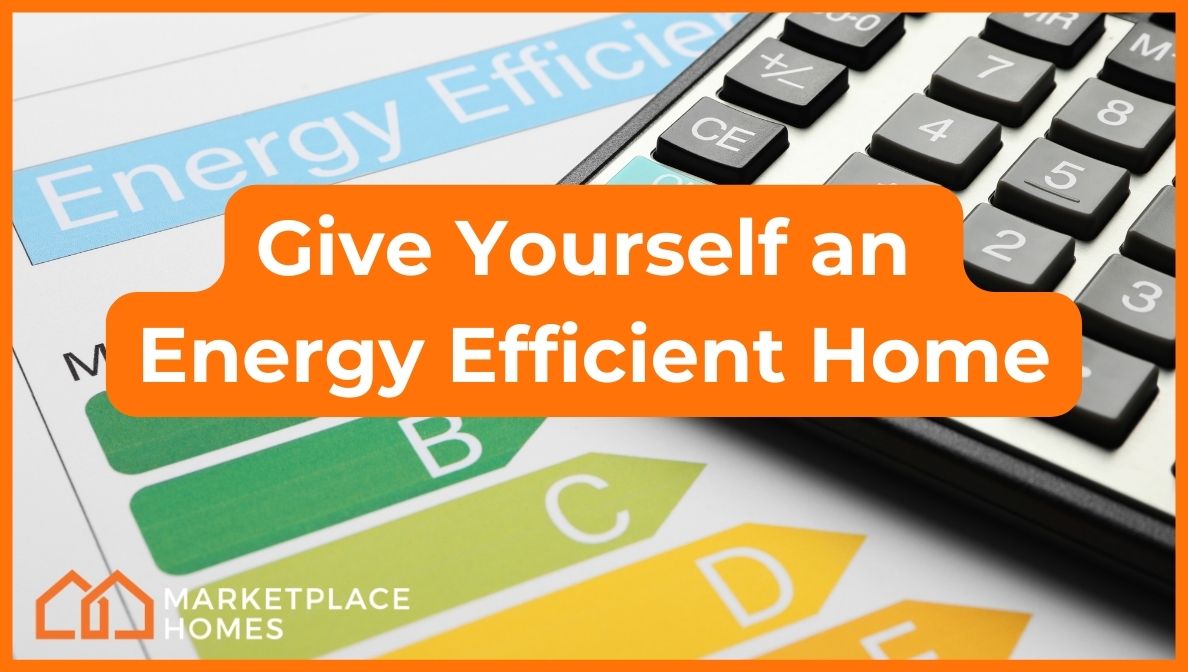How to Make Your Home More Energy-Efficient
With the temperatures plummeting outside, making your home more energy efficient can keep you more comfortable indoors. Though the easiest way to get an energy-efficient home is to buy a new construction home that’s up to code, you can still make your current home more eco-friendly. Anytime is a great time to enjoy better energy savings. After all, who doesn’t like to save money?
You don’t need to do a lot to see a reduction in your energy bills, either. Some of these tasks, like changing light bulbs, can take just a few minutes out of your day. Are you ready to save energy and make your home or investment property better than ever? Here are some ways to lower your property’s energy use and reduce emissions.
What is an Energy-Efficient Home?
An energy-efficient home is made of environmentally conscious materials, uses efficient HVAC systems, and has appliances that reduce a home’s need for energy. Homeowners of eco-friendly houses enjoy lower energy costs on their electric bills. Compared to older homes, these homes have little to no air leaks and minimal energy loss.
The easiest way to get an energy-efficient home is to buy a new home construction that is up to code. More recent buildings are designed with the latest standards in mind, so they are made for efficient energy usage. However, you can still improve an older home by upgrading outdated components and routine maintenance.
Benefits of an Energy-Saving Home
Homes that pass an energy auditor’s standards can give property owners and tenants many advantages. Here are some of the main perks of making your property energy efficient.
1. No more chilly drafts!
So much heat loss through cracks in windows and doors makes winter a tough season, even when indoors. However, optimizing your home to reduce or eliminate hot air loss will make your daily life cozier and more enjoyable.
2. You spend less on HVAC repairs & utilities.
An efficient home needs less temperature control. This means longer HVAC life, so you pay less for air conditioner repairs, cooling costs, and heating bills.
3. Your furniture and carpeting last longer.
Homes with low-E Energy Star windows protect your interiors from UV rays, leading to less fading for carpets and furniture.
4. Less waste goes to landfills.
Eco-friendly homes use reclaimed and recyclable materials, which decreases your carbon footprint.
5. You get tax savings.
Depending on your state, you can claim rebates for installing energy-saving components in your home.
6. Potential for higher resale value.
A recent study from Freddie Mac found that energy-efficient homes typically sell 3% – 5% higher homes that aren’t rated energy-efficient.
Characteristics of an Energy-Efficient Home
An energy-saving home has lower energy consumption compared to a typical house. Here are some elements you’ll see in this kind of dwelling.
1. Smaller, with Eco-Friendly Components
Energy-efficient home designs such as smaller square footage, use of renewable materials, one-level living, and many home improvement measures that reduce energy consumption.
2. Less Drafts on All Fronts
If you do an energy audit, you can find where air leaks and drafts are happening. After identifying issues, you can fix them and get:
-
An efficient air duct system with no leaks so that you get maximum performance.
-
An air-tight front door and accompanying storm door.
-
Air-tight windows made with low-E glass that insulate the house.
3. Better Ways to Heat Water
Energy efficient homes can use a tankless water heater to save on heating costs compared to a traditional hot water heater. How? They can heat water instantaneously without needing a storage tank.
When you turn hot water, cold water flows through a heat exchanger in the tankless water heater, providing hot water without needing to heat a large tank.
4. More Efficient Heating and Cooling
An HVAC system upgrade to at least 14 SEER for air conditioning and heating. Use ceiling fans for airflow in mild seasons to reduce the strain on your HVAC system.
5. Water-Saving Measures
Saving water is a huge part of being more eco-friendly. Improvements like dual-flush toilets save on water usage, as well as water saving faucets and showerheads.
-
Hot tip: Get a regular plumbing inspection to rule out some sneaky issues like a faulty pressure regulating valve, which can drive up water usage when left unrepaired.
6. Integration of Smart Thermostats
Programmable thermostats to minimize energy use throughout the week according to your schedule.
7. Use of Renewable Energy Sources
For example, solar panels can supplement your energy needs, lowering your electric bill. Other less popular energy sources like geothermal are possible, but those are not common. However, alternative energy sources can become more common in homes in the future!
8. Use of Energy Star-rated Appliances and Building Components
Did you know that an Energy Star-certified house is at least 10% more energy-efficient than other houses built to code? Even changing energy-efficient appliances one at a time, like a dish washer or washing machine, can make a big impact over time. Having options like air-dry for a clothing dryer can make a difference too.
9. Capitalize on Insulation
Using more efficient forms of home insulation means a less drafty home and less energy usage. Spray foam insulation can be a huge upgrade for maximum R-value.
10. Maximize Natural Light
You can get more natural light inside your home by upgrading windows or through installing skylights. Efficient light bulbs like LED and CFL also use less energy than incandescent bulbs.
11. Big-Ticket Energy Upgrades
Deflecting excessive heat and cold through energy-upgrading installations like cool roofs will keep a house cooler in the summer and warmer in the winter. New appliances like refrigerators with Energy Star ratings can save money compared to older, less efficient models.
Energy-efficient windows and a heat pump above 14 SEER are also upgrades that reduce the amount of energy you use. The more energy efficient models that you have in your house, the lower your utility bill!
Cheap and Quick Solutions
As always, we take advantage of every opportunity to share quick and easy ways to work toward your goals. After all, it’s far better to take some steps forward than none. These solutions cost under $200 and require a fraction of a weekend to complete, so they are perfect for busy homeowners and investors that want to make quick improvements.
-
Install window tint film on existing windows. While this is not a perfect solution, it will reduce the heat a window lets into the house and protect your home from UV rays. This is a great temporary option to hold you over until you install new windows. You can also install blackout/insulating curtains and blinds to help insulate your windows.
-
Switch out some old-fashioned bulbs. Take out your old bulbs and replace them with LED bulbs. Light-emitting diode bulbs (the other name for LED lights) use far less energy than traditional incandescent bulbs.
-
Install efficient faucets and shower heads. Low-flow shower heads will save you on water bills, saving you thousands of gallons of water. These shower heads and faucets are designed to pressurize water so that you won’t notice a difference even when you’re using less water.
-
Stop the drafts with DIY methods. Seal old doors and windows with caulk and weatherstripping.
-
Reduce pressure on your HVAC. Install ceiling fans that you can run during the hottest months of the year.
Find an Energy-Efficient Home with Marketplace Homes
We’re here to help you on your real estate journey. Whether you want to find a new investment property or a new energy-efficient home. Contact us and one of our real estate experts will be glad to help you meet your goals.
Alicia Persson is a Content Strategist SEO writer at Marketplace Homes, utilizing previous years of experience on real estate teams that specialized in investments and property management. Before she joined Marketplace Homes, she was also a freelance writer for 7 years, leading to a specialization in real estate and home living content for boutique digital marketing agencies. During her writing years, she learned the basics of SEO and gained experience writing for many different clients, making her versatile at creating diverse content.
She is a proud University of Virginia master’s graduate and enjoyed her undergraduate years at the University of Mary Washington. When Alicia is not writing, she plays keytar and sings in a local 90’s rock cover band, or she spends time with her amazing family.


